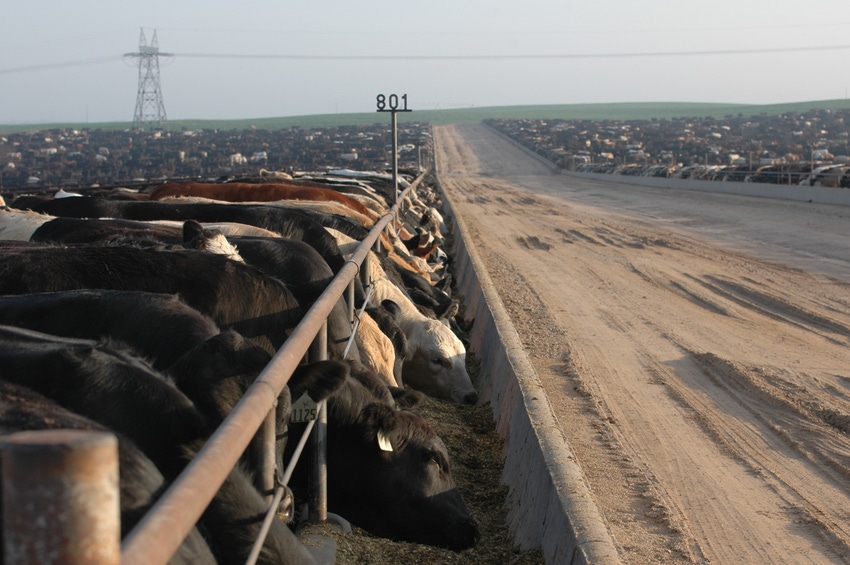Here’s why premiums, regardless of the current cattle cycle, matter
Notwithstanding the advent of widespread, long-term drought or some unexpected economic crisis, current demand levels — and growing international demand — make it hard to see a trough as deep as some forecasts suggest.
March 30, 2018

If recent history and long-term forecasts are any indication, then the cattle cycle will remain flatter, suggesting that controlling cost and exploiting premium price opportunities will be keys to maintaining or increasing revenue.
As for history, the variation of inventories within a given cattle cycle is declining over time. In other words, from cycle to cycle, the gap between the minimum and maximum cattle inventory continues to narrow.
That’s the conclusion of a fact sheet authored last year by Glynn Tonsor, Kansas State University agricultural economist, and James Mitchell, a KSU graduate student in agricultural economics.
In fact, they say, the range declined over the past four cycles.
Specifically, the range in beef cow numbers was 11.0 million head for 1967-79. It was 6.8 million head for 1979-90, 2.9 million head for 1990-2004 and 3.6 million head for 2004-14. Using recent projected inventory peaks from USDA and the Food and Agricultural Policy Institute (FAPRI) at the University of Missouri, the range for the current cycle will be 2.9 million to 3.1 million head.
That has plenty to do with increasing fed cattle carcass weights.
“Slaughter weights have persistently increased over time, offsetting declining beef cow inventories, resulting in increasing beef production,” Tonsor and Mitchell say. “This effectively reduces demand for beef cows relative to the past, where less beef was produced per animal moving through the industry’s supply chain.”
Beef production last year is estimated at about 26.2 billion pounds. USDA estimates beef production this year at 27.6 billion pounds, the least of the decade, and then meandering up to 29.1 billion pounds in 2027. FAPRI projections have beef production growing to 28.54 billion in 2020, and then declining gradually to 28.22 billion in 2027.
For my money, the FAPRI forecast feels more in step with reality. Notwithstanding the advent of widespread, long-term drought or some unexpected economic crisis, current demand levels — and growing international demand — make it hard to see a trough as deep as what the USDA forecast suggests.
As producer returns decline in the near term, FAPRI analysts believe beef production will slow. “Continuing increases in exports and population growth will lead to a decline in per-capita meat availability (domestic) by 2021,” they say.
Closer to home, FAPRI estimates the feeder steer price (Oklahoma City 600 to 650 pounds) at $147.80 per cwt, declining to $138.34 in 2020 and then gradually increasing to $183.42 by 2027. Prices for 2019-22 are projected at $143.11, $138.34, $142.90 and $150.79, respectively.
USDA projects the Oklahoma City feeder steer price (750 to 800 pounds) at $144.05 per cwt this year and then declining for the rest of the decade to $104.94. Prices for 2019-2022 are projected at $133.21, $126.12, $124.52 and $117.98, respectively.
Likewise, USDA sees the 5 Area fed steer price this year at $117.25 per cwt, and then declining for the rest of the decade to $97.13. Prices for 2019-22 are projected at $111.96, $107.16, $107.40 and $103.63.
FAPRI, on the other hand, projects this year’s 5 Area fed price at $115.25 per cwt, then declining to $110.15 by 2020, and then gradually increasing to $132.41 by 2027. Prices for 2019-22 are projected at $112.71, $110.15, $111.37 and $115.20, respectively.
These projections were made in January, before the market run-up. Whichever projection is closest to the truth, both see prices declining for at least the next several years.
“The observation of beef cow inventory variability within cycles declining over time has direct implications for producers evaluating the current situation and contemplating entry-exit decisions in the context of where the industry is at in the current cattle cycle,” Mitchell and Tonsor say. “Narrowly, producers should recognize the industry’s efficiency gains as evidenced by increasing slaughter weights offsetting declining inventories, and subsequently note the national beef cow herd is unlikely to return to historic levels.”
About the Author(s)
You May Also Like




.png?width=300&auto=webp&quality=80&disable=upscale)
